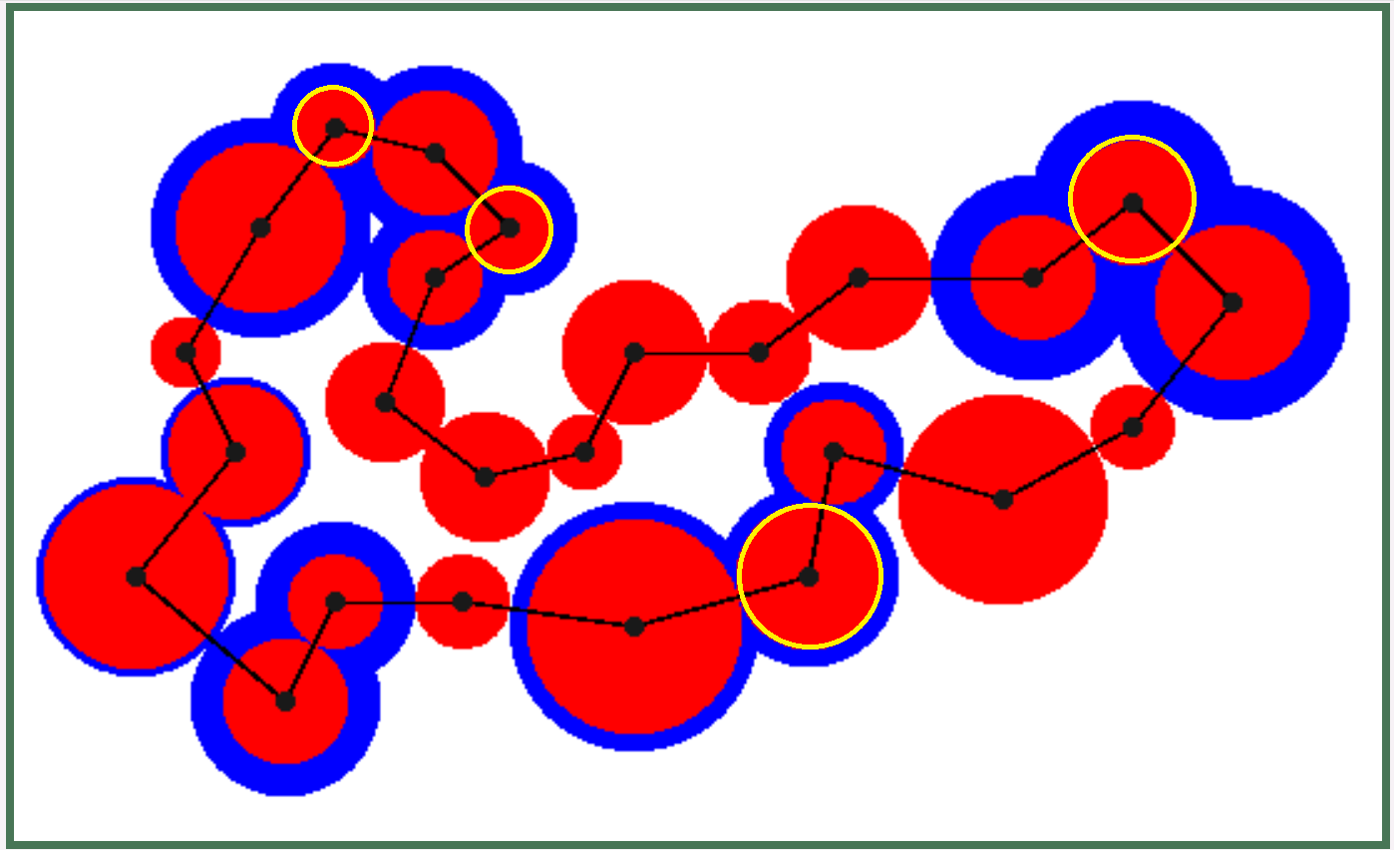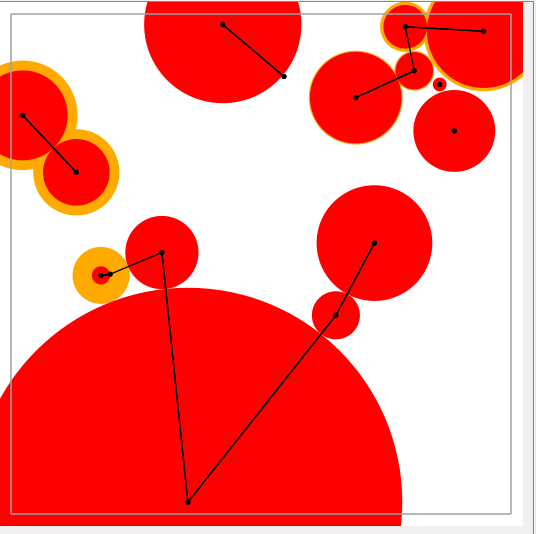According to the TSP Gallery moats provide lower bounds for the optimal solution of TSP instances.
On the webpage they are depicted as blue rings around red disks, whose radii represent maximal vertex weights that, when subtraced from adjacent edges' lengths do not yield negative values.
One statement on the page says: "any tour must have length at least twice the sum of the radii of the red "zones" plus twice the sum of the widths of the blue "moats"; this proves that the indicated tour is optimal." but that doesn't quite comply with the visualisation:
If you look at the moats around disks that I have marked with a yellow boundary, you will see that they do not contribute to tour length and no explanation of what moats actually are is given.
Question:
what are the moats actually, i.e. am I right if I suspect that they resemble circles of minimal radius sum whose convolution with the connected components of the red disks yields a biconnected image of contacting or overlapping convoluted disks?


